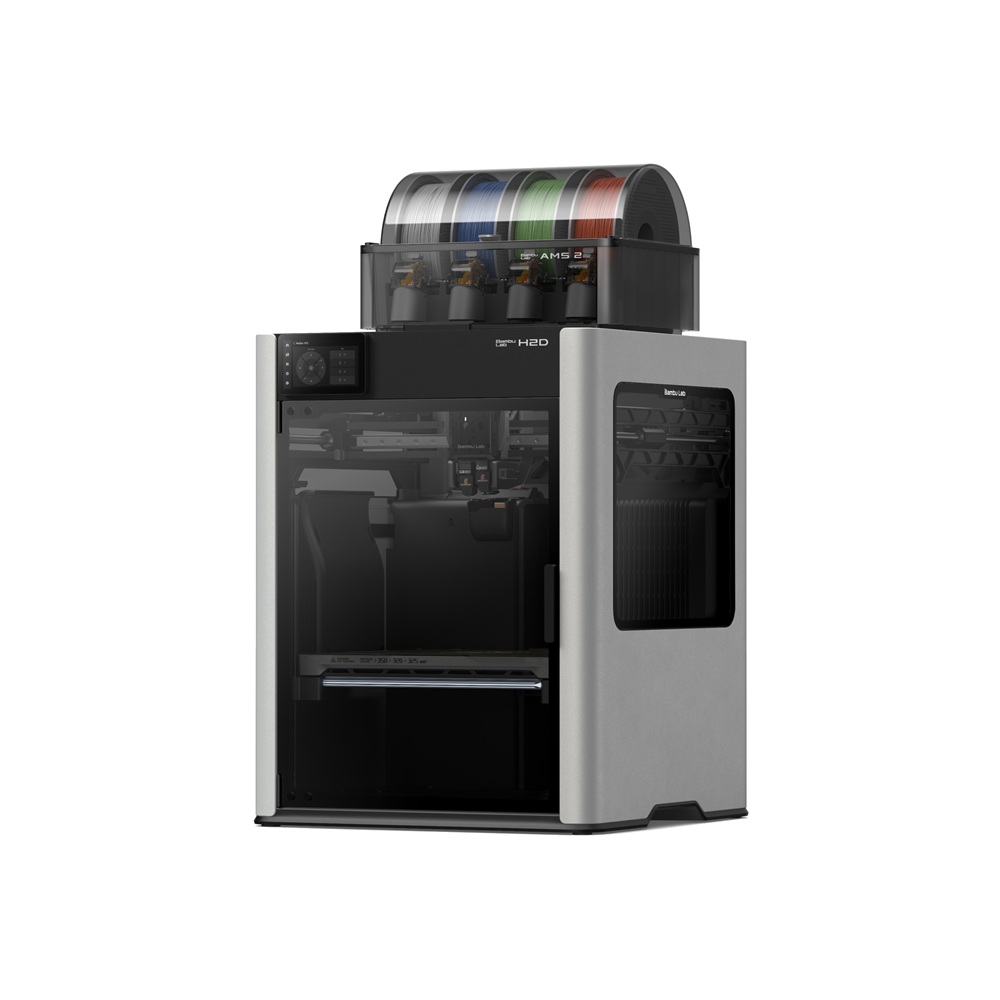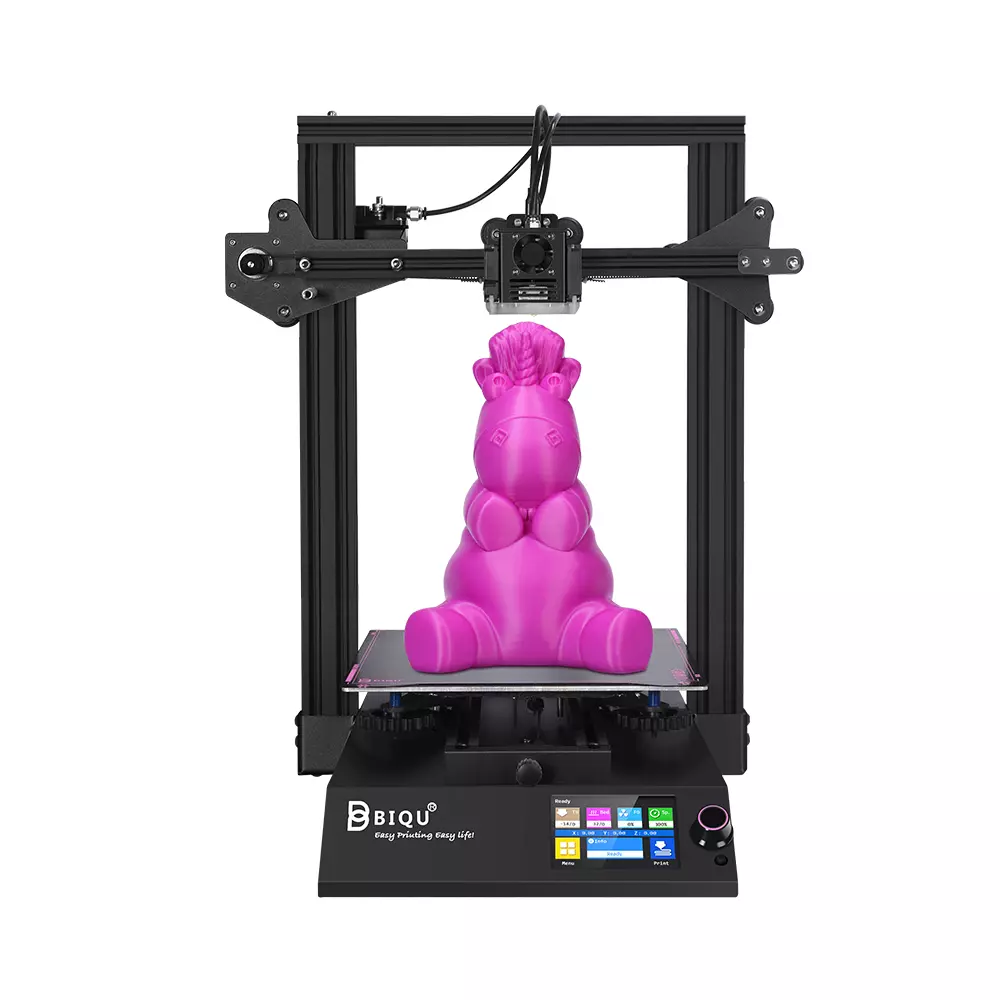Compare H2D vs BIQU B1
Comparison between the best 3D printers
Choose the best 3D printer at the best price. The cheapest 3D printers are here.
Buy a 3D printer here with 3D Fila.
 |
 |
|
| Model | H2D |
BIQU B1 |
| Printing Material | Filament | Filament |
| Buy Filament for Bambu Lab H2D | Buy Filament forBigTreeTech BIQU B1 | |
| Estimated price | $1899,00 | $269,00 |
| Manufacturer | Bambu Lab | BigTreeTech |
| Release Year | 2025 | 2020 |
| Print Volume [mm] | 350x320x325 | 235x235x270 |
| Printer Size [mm] | 492x514x626 | 412x402x492 |
| Weight [kg] | 42,3 | 8,00 |
| Power Loss Recovery | YES | YES |
| Enclosed printer | YES | NO |
| Bed Leveling | Automatic | Manual |
| Filament End Sensor | YES | YES |
| Bed type | Heated | Heated |
| Power supply system | Direct Drive | Bowden |
| Standard nozzle | 0,4 | 0,4 |
| Maximum Nozzle Temperature [°C] | 350 | 250 |
| Maximum Bed Temperature [°C] | 120 | 100 |
| Maximum printing speed [mm/s] | 600 | 100 |
| Filament holder | YES | YES |
| Camera for supervision | YES | YES |
| Recommended filaments | PLA, PETG, ABS, ASA, TPU, PVA, Nylon (PA) | PLA, TPU, ABS, PETG |
| Recommended slicers | Bambu Studio | Cura, Simplify, Slic3r |
| Maximum Resolution [mm] | 0,01 | 0,1 |
| Processor | 32 Bits BTT SKR V 1.4 | |
| Display | Touchscreen 5'' | Touchscreen TFT 3,5'' |
| Power Supply | 24V / 360W | |
| Connectivity | Wifi, Bambu bus, Cartão SD | SD / USB |
| Operating systems | Windows, Mac, Linux | Windows, Mac, Linux |
| Date of registration in the system | 2025-03-31 | 2021-04-14 |
| Release date | 2025 | 2020 |
| Extra features | Bambu Labs H2D combines high-speed 3D printing with a chamber heated up to 65 °C, dual extrusion with automatic nozzle switching, an AMS for filament drying and exchange, and AI sensors that detect failures. It offers optional laser and digital cutting capabilities, features intelligent calibration through computer vision, vibration control, enhanced fire safety, and real-time camera monitoring. | The BIQU B1 is an advanced 3D printer with a silent 32-bit BTT SKR V1.4 motherboard and ARM Cortex-M3 CPU, offering DIY interfaces (I2C, SPI, WiFi) and dual Z-axis. Its dual BTT B1 TFT35 V3.0 operating system allows real-time monitoring and multiple printing modes, including G-code visualization effects. It stands out for its BIQU SSS (Super Spring Steel), ensuring easy model adhesion and simplified removal, with the possibility of using it on both sides. It includes a filament sensor, automatically pausing printing in case of filament breakage. The multicolored RGB lights integrated into the hotend allow you to view the printing status even at night. Additional notes include the need for a BIQU-specific Type-C cable and extra interfaces for smart filament sensor and BL Touch. |
| Support for multiple colors and materials (AMS and CFS) | YES | NO |
Notes * |
||
| Cost-benefit | 7 / 10 | 6 / 10 |
| Hardware | 8 / 10 | 2 / 10 |
| Tela | . | . |
| Print volume | 4 / 10 | 3 / 10 |
| Performance | 5 / 10 | 0 / 10 |
Conclusion |
| In conclusion, the comparison between the Bambu Lab H2D and the BigTreeTech BIQU B1 highlights distinct strengths and weaknesses suited to different user needs and budgets. The Bambu Lab H2D, while significantly more expensive, offers advanced features such as a larger print volume, automatic bed leveling, and enhanced printing speeds. Its enclosure and higher maximum nozzle and bed temperatures make it conducive to a wider variety of materials, including more complex filaments. The inclusion of AI sensors, dual extrusion capabilities, and an advanced monitoring system further positions the H2D as a premium option for serious hobbyists or professionals who prioritize performance and versatility in their 3D printing projects. Conversely, the BIQU B1 presents itself as a cost-effective solution for beginners or casual users. Despite its lower print volume and less sophisticated features, it still provides a reliable printing experience with essential functionalities like manual bed leveling and a heated bed. The BIQU B1 is suitable for those who may not require the cutting-edge capabilities of the H2D but still wish to explore 3D printing without a significant initial investment. Ultimately, the choice between the two models should be guided by the intended use case and budget. For users seeking high performance and advanced functionalities, the H2D would be a worthwhile investment. However, for newcomers or those seeking a more economical option, the BIQU B1 serves as a solid entry point into the world of 3D printing. |

